1. Atmospheric Observations of East Asian continental outflow at Fukue Island, western Japan
Data Sharing: Atmospheric composition have been observed at Fukue Island, Japan, since 2009. BC, PM2.5, CO and O3 data could be accessed from the table below.
Rapid economic growth and industrial innovation in the Asian region are changing the emission patterns of gaseous and particulate air pollutants from human activities, resulting from the transition of energy sources and changes in land use. In addition, natural environments are changing rapidly along with the occurrence of forest fires and dust storms. These changes not only affect the atmospheric environment in East Asia, but also have a significant impact on global warming via the effects of short-lived climate forcers (SLCFs). Furthermore, atmospheric aerosols are transported long distances and are an important factor affecting the supply of nutrients such as nitrogen and iron to the Northwestern Pacific region and the warming of the Arctic.
Fukue Island, in Nagasaki Prefecture in western Japan, is an ideal location for capturing the influence of atmospheric migration from the Asian continent from the autumn to spring seasons, as it has low emissions of pollutants from local anthropogenic sources. Since 2009, we have conducted long-term observations at Fukue Island of atmospheric pollutants such as ozone (O3), carbon monoxide (CO), nitrogen dioxides (NO2), fine particulate matter (PM2.5) and its components such as black carbon (BC), organic carbon (OC), brown carbon (BrC), water-soluble ions, and metallic elements (e.g., iron). As a result, we have obtained the following important scientific findings:
- 1. Japan's PM2.5 environmental standard was not achieved due to the inflow of East Asian-wide air pollution at the time of its establishment (2009-2010, etc.), but it has rapidly improved. (Kanaya et al. (2010), Press Release #1)
- 2. It was shown that China's BC emissions have reduced by 40% in 10 years from 2009 to 2019, and this was included in the IPCC's Sixth Assessment Report. Based on the results, the input values for emissions in CMIP6, which were overestimated by about twice, were later revised. (Kanaya et al. (2020), Kanaya and Yamaji (2021), Press Release #5)
- 3. It was revealed that about 90% of BC in the downstream region of East Asia in spring was caused by the combustion of fossil fuels, and it was shown that actions to suppress emissions from human activities is effective in reducing BC concentrations. On the other hand, it was also found that the contribution from natural sources cannot be ignored for OC. (Miyakawa et al. (2019), Press Release #4)
- 4. It was clarified that BC in China is mainly emitted from the residential sector. The emission control from the residential sector is an effective option for stabilizing the climate and improving human health, taking into account the economic evaluation as well. (Kanaya et al. (2021), Press Release #6)
- 5. For BrC, which has an important impact on climate change, but whose physicochemical properties, sources, and chemical reaction processes have not yet been fully understood, the light-absorption properties were successfully evaluated using in-situ filter measurements and skyradiometer observations of the ground-based remote sensing network SKYradiometer NETwork (SKYNET). This led to the verification of the global SKYNET observation network. (Zhu et al. (2021))
- 6. For trace elements such as sulfur, iron, silica, copper, lead, and manganese, which play important roles in the Earth system such as human health, climate change, and biogeochemistry, high-temporal resolution observations were successfully carried out for the first time in East Asia. This revealed the anthropogenic emissions, source apportionments, and removal processes for each element. (Miyakawa et al. (2023), Miyakawa and Ito (2023))
The results of the aerosol observations of BC and iron, etc., conducted to date have been effectively used for the verification and improvement of atmospheric chemical transport models, and have generated synergies between observations and models in many studies (Matsui et al. (2013, 2014); Ikeda et al. (2014, 2015, 2022); Kanaya et al. (2017); Ito and Miyakawa (2023); Press Release #7). In addition, we have contributed to international research projects by providing ground-based observation data for large-scale aircraft observation campaigns such as KORUS-AQ (2016) (Tang et al. (2018, 2019)) and EMeRGe-Asia (2018) (Kanaya et al. (2020)), and by conducting ground-based verification of O3 and NO2 concentrations by satellites such as the TROPOspheric Monitoring of Pollution (TROPOMI) instrument on the Sentinel-5 Precursor satellite and the Ozone Mapping and Profiler Suite (OMPS) on the Suomi National Polar-orbiting Partnership (NPP) satellite. (Cuesta et al. (2018), Pinardi et al. (2020), Liu et al. (2020), Verhoelst et al. (2021), Chan et al. (2023), Zhang et al. (2023)). We are also sharing these valuable long-term observation data from the Asian region with the international community.
Looking ahead, we will continue to conduct high-precision observations of various air pollutants (you can find more information about the observation of NO2 using the MAX-DOAS system here) and contribute to new observation campaigns such as ASIA-AQ (2024). We will also continue to provide essential data for the validation and improvement of atmospheric chemical transport models, as well as for the validation of satellite and ground-based remote sensing observations. Additionally, we will quantify the nitrogen, iron, and other trace elements contained in aerosols transported from the Asian region to the ocean (you can find more information about shipboard observations here), and elucidate their links to marine ecosystems and carbon cycles. Through these efforts, we aim to deepen our understanding of the impact of Asian-origin air pollutants on the global environment and contribute to the development of effective strategies for air pollution control and climate change mitigation.
Data Sharing: We are sharing the following data that has been observed in Fukue Island, Japan, since 2009. Please contact the principal investigator listed in the header of each data file before using.
Major observed components (hourly data is available)
| Components | Period | Download link | Main references |
|---|---|---|---|
| BC | 2009-2023 | bc_fukue_2009-2023_hourly.csv | Kanaya et al., AST 2013; Miyakawa et al., ACP, 2017; Miyakawa et al., AE, 2019; Kanaya et al., ACP, 2020; Kanaya et al., Sci Rep, 2021. |
| PM2.5 | 2009-2023 | pm25_fukue_2009-2023_hourly.csv | Kanaya et al., AAQR, 2017; Kanaya et al., ACP, 2020. Miyakawa et al., ACP, 2023. |
| CO | 2013-2023 | co_fukue_2013-2023_hourly.csv | Kanaya et al., ACP, 2020; Kanaya et al., Sci Rep, 2021. |
| O3 | 2009-2023 | o3_fukue_2009-2023_hourly.csv | Kanaya et al., AAQR, 2016. |

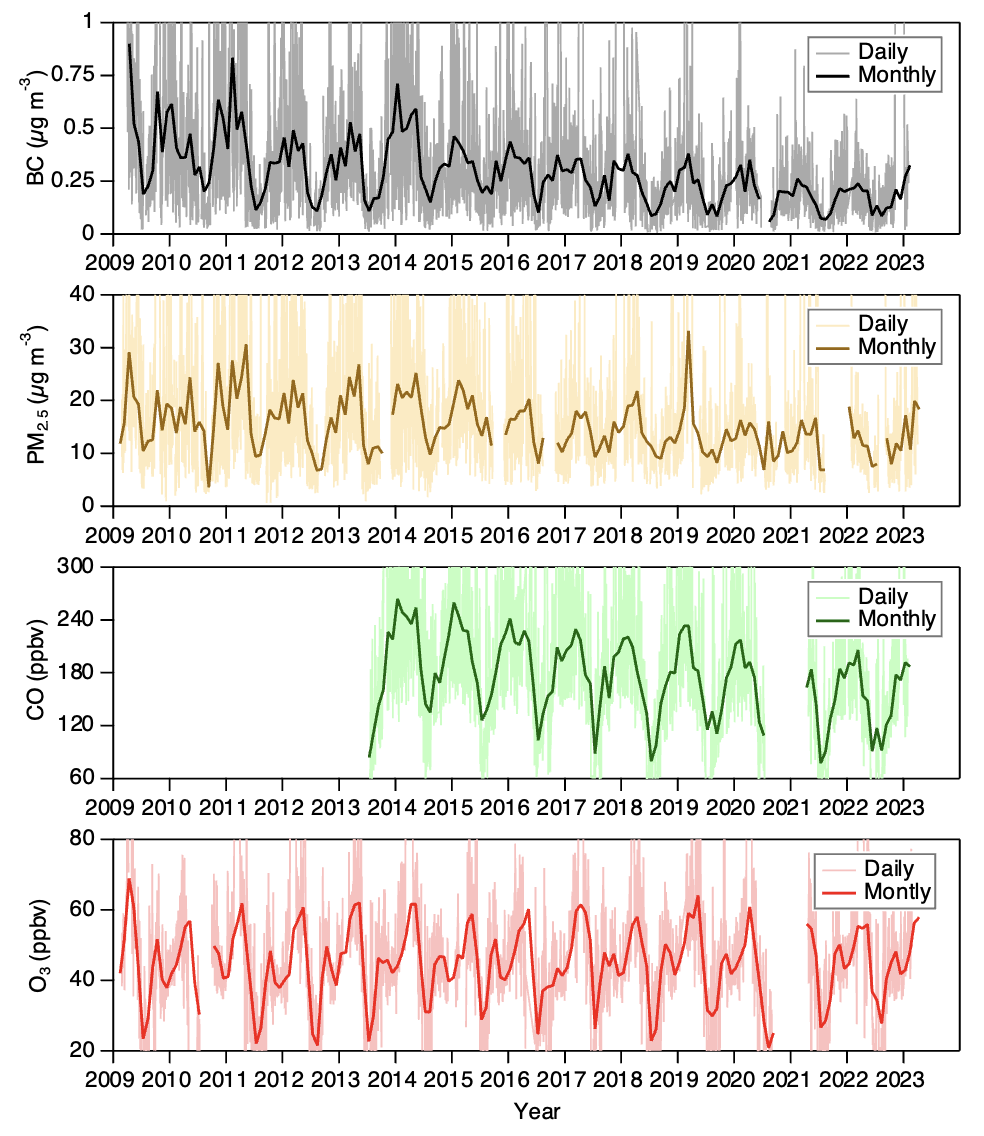
Featured research themes (some cases since 2020)
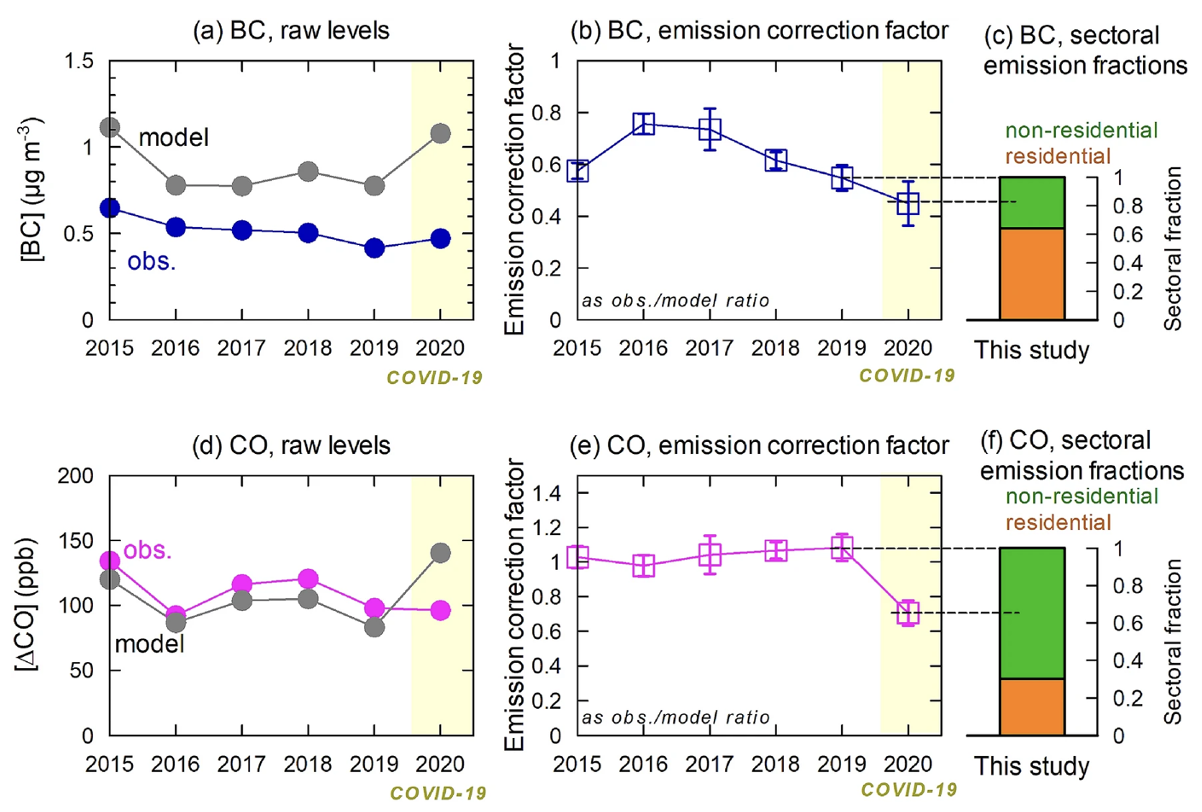
1. The contribution of residential emissions to black carbon (BC) emissions in China. In a study published in 2021, Kanaya et al. found that household emissions are the main source of BC emissions in China. This finding is important because it suggests that policies to reduce household emissions, such as improving stove efficiency, could be an effective way to reduce BC emissions in China. For more details, please refer to Kanaya, Y. et al. (2021) and related press release (December 2021).
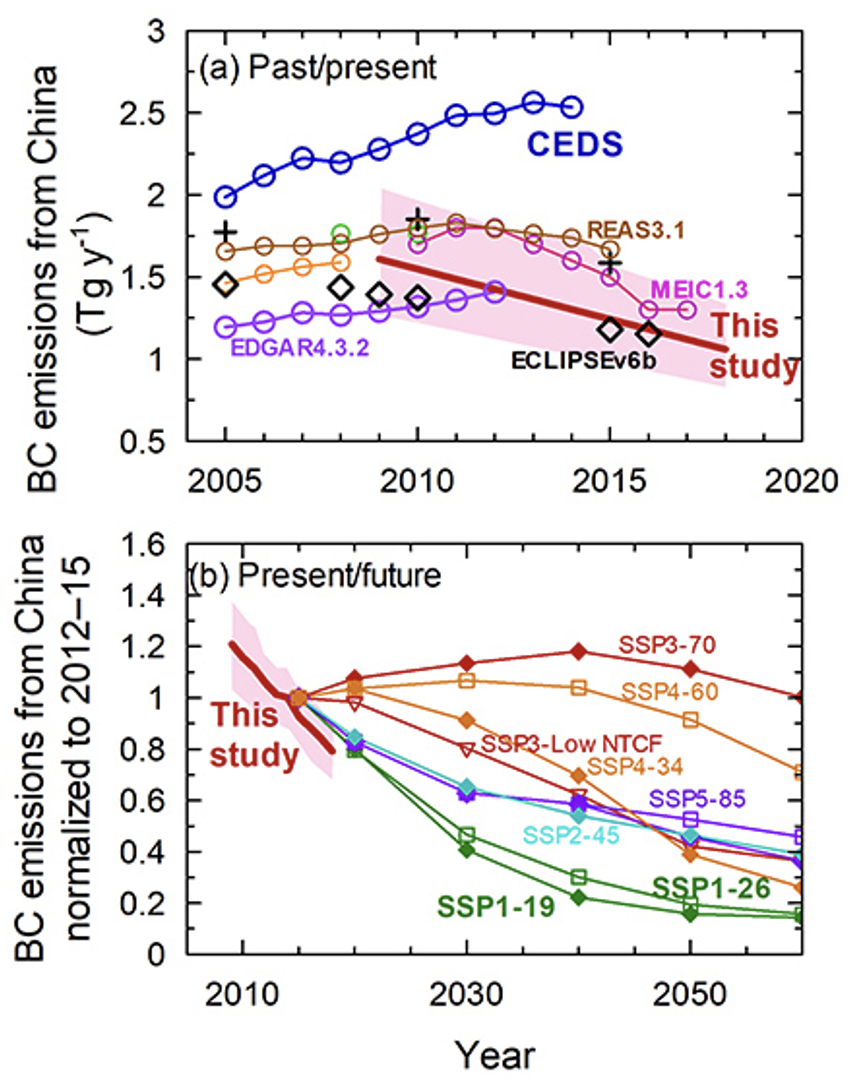
2. Long-term observations of black carbon (BC) revealed that China's BC emissions decreased by 40% from 2009 to 2019. This finding was included in the Sixth Assessment Report of the Intergovernmental Panel on Climate Change (IPCC). For more information, please see Kanaya, Y. et al. (2020) and Kanaya and Yamaji (2021) , as well as the related press release (June 2020).
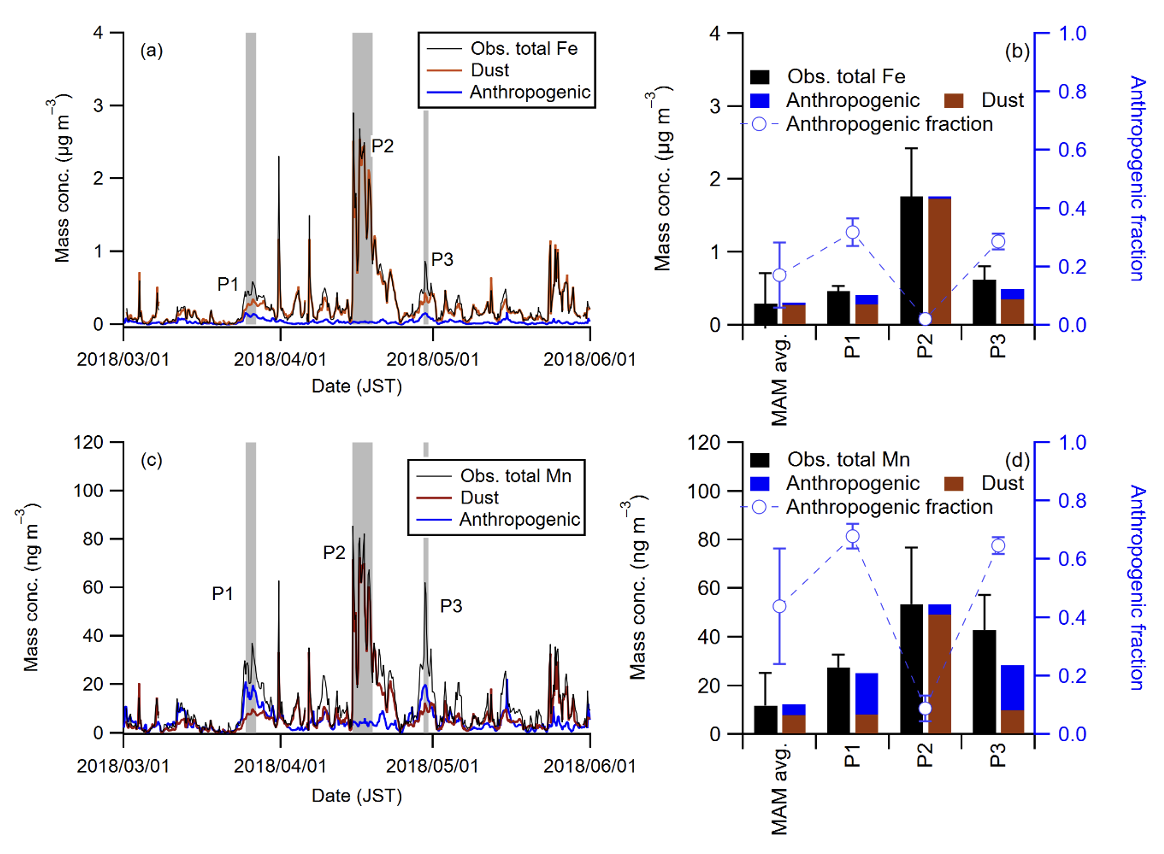
3. Elemental characterization of PM2.5 aerosols revealed that the concentrations of iron and manganese can be divided into contributions from anthropogenic sources and lithogenic sources such as dust storms. For more information, please see Miyakawa, T. et al. (2023).
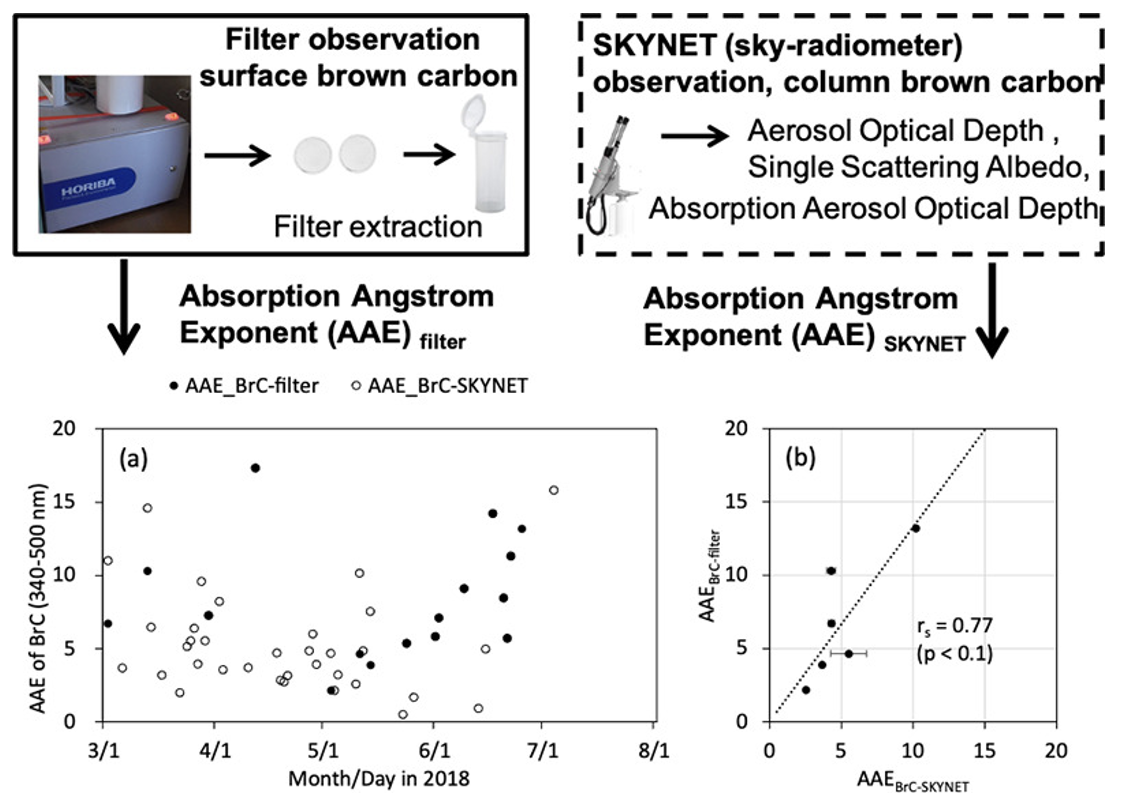
4. Observations of brown carbon (BrC) in PM2.5 were used to evaluate light absorption characteristics and verify ground-based remote sensing data. For more information, please see Zhu, C. et al. (2021) (© 2021 Elsevier B.V.).
For those who want to know more
Press releases
- PM2.5 at Fukue Island exceeded the atmospheric environmental standard in Japan (in Japanese, November 2010).
- Satellite-based observations may be underestimating tropospheric NO2 vertical column density (TropoNO2VCD) (August 2014).
- Significant correlations between wet removal rates of black carbon and accumulated precipitation (August 2016).
- Ninety percent of black carbon during spring in East Asia originates from fossil fuels (October 2019).
- Major reduction in black carbon emissions from China over the past decade (June 2020).
- Household emissions are the main source of BC emissions in China (in Japanese, December 2021).
- Unintentional ocean fertilization by anthropogenic iron co-emitted with sulfur dioxide from smelting facilities (March 2023)
Other outreach activities
- Unsolved fine particles “Aerosols”: A challenge for revealing their nature through atmospheric monitoring (in Japanese, December 2023)
Main publications
- Miyakawa, T. et al. (2023), Trace elements in PM2.5 aerosols in East Asian outflow in the spring of 2018: Emission, transport, and source apportionment, Atmos. Chem. Phys., 23, 14609–14626
- Ito and Miyakawa (2023), Aerosol iron from metal production as a secondary source of bioaccessible iron, Environ. Sci. Technol., 57, 10, 4091–4100.
- Chan, K. L. et al. (2023), Global Ozone Monitoring Experiment-2 (GOME-2) daily and monthly level-3 products of atmospheric trace gas columns, Earth Syst. Sci. Data, 15, 1831–1870
- Zhang, Y. et al. (2023), POMINO-GEMS: A research product for tropospheric NO2 columns from Geostationary Environment Monitoring Spectrometer, Atmos. Meas. Tech., 16, 4643–4665.
- Ikeda, K. et al. (2022), Evaluation of anthropogenic emissions of black carbon from East Asia in six inventories: Constraints from model simulations and surface observations on Fukue Island, Japan, Environ. Sci.: Atmos., 2, 416–427.
- Kanaya, Y. et al. (2021), Dominance of the residential sector in Chinese black carbon emissions as identified from downwind atmospheric observations during the COVID-19 pandemic, Sci. Rep., 11, 23378.
- Kanaya and Yamaji (2021). Major reduction in black carbon emissions from China over the past decade as identified from long-term observations at Fukue Island, Nagasaki, Japan, Earozoru Kenkyu, 36, 104–109 (in Japanese).
- Zhu, C. et al. (2021), Light-absorption properties of brown carbon aerosols in the Asian outflow: Implications of a combination of filter and ground remote-sensing observations at Fukue Island, Sci. Tot. Environ., 797, 149155.
- Choi, Y. et al. (2021), Long-term variation in the tropospheric nitrogen dioxide vertical column density over Korea and Japan from the MAX-DOAS network, 2007–2017, Remote Sensing, 13, 1937.
- Verhoelst, T. et al. (2021), Ground-based validation of the Copernicus Sentinel-5P TROPOMI NO2 measurements with the NDACC ZSL-DOAS, MAX-DOAS and Pandonia global networks, Atmos. Meas. Tech., 14, 481–510.
- Kanaya, Y. et al. (2020), Rapid reduction of black carbon emissions from China: evidence from 2009–2019 observations on Fukue Island, Japan, Atmos. Chem. Phys., 20, 6339–6356.
- Liu, M. et al. (2020), A new TROPOMI product for tropospheric NO2 columns over East Asia with explicit aerosol corrections, Atmos. Meas. Tech., 13, 4247–4259.
- Pinardi, G. et al. (2020), Validation of tropospheric NO2 column measurements of GOME-2A and OMI using MAX-DOAS and direct sun network observations, Atmos. Meas. Tech., 13, 6141–6174.
- Kanaya, Y. (2019).Promotion of integrated understanding of air pollution over Asia based on observations using spectroscopic techniques. Tenki, 67, 519–529 (in Japanese).
- Miyakawa, T. et al. (2019), Characterization of carbonaceous aerosols in Asian outflow in the spring of 2015: Importance of non-fossil fuel sources, Atmos. Environ., 214, 116858.
- Tang, W. et al. (2019), Source contributions to carbon monoxide concentrations during KORUS-AQ based on CAM-chem model applications, J. Geophys. Res. Atmos., 124, 2796–2822.
- Tang, W. et al. (2018), Evaluating high-resolution forecasts of atmospheric CO and CO2 from a global prediction system during KORUS-AQ field campaign, Atmos. Chem. Phys., 18, 11007–11030.
- Cuesta, J. et al. (2018), Transboundary ozone pollution across East Asia: daily evolution and photochemical production analysed by IASI + GOME2 multispectral satellite observations and models, Atmos. Chem. Phys., 18, 9499–9525.
- Kanaya, Y. et al. (2017), Observed and modeled mass concentrations of organic aerosols and PM2.5 at three remote sites around the East China Sea: Roles of chemical aging, Aerosol Air Quality Res., 17, 3091–3105.
- Miyakawa, T. et al. (2017), Alteration of the microphysical properties of black carbon through transport in the boundary layer in East Asia, Atmos. Chem. Phys., 17, 5851–5864.
- Kanaya, Y. et al. (2016a), Diagnosis of photochemical ozone production rates and limiting factors in continental outflow air masses reaching Fukue Island, Japan: ozone-control implications, Aerosol and Air Quality Res., 16, 430–441.
- Kanaya, Y. et al. (2016b), Long-term observations of black carbon mass concentrations at Fukue Island, western Japan, during 2009–2015: Constraining wet removal rates and emission strengths from East Asia, Atmos. Chem. Phys., 16, 10689–10705.
- Ikeda, K. et al. (2015), Source region attribution of PM2.5 mass concentrations over Japan, Geochem. J., 49, 185-194.
- Kanaya, Y. et al. (2014), Long-term MAX-DOAS network observations of NO2 in Russia and Asia (MADRAS) during 2007–2012: instrumentation, elucidation of climatology, and comparisons with OMI satellite observations and global model simulations, Atmos. Chem. Phys., 14, 7909–7927.
- Ikeda, K. et al. (2014), Sensitivity analysis of source regions to PM2.5 concentration at Fukue Island, Japan, J. of Air & Waste Manage. Assoc., 64, 445–452.
- Matsui, H. et al. (2014), Volatility basis-set approach simulation of organic aerosol formation in East Asia: implications for anthropogenic-biogenic interaction and controllable amounts, Atmos. Chem. Phys., 14, 9513–9535.
- Kanaya, Y. et al. (2013), Comparison of black carbon mass concentrations observed by multi-angle absorption photometer (MAAP) and continuous soot-monitoring system (COSMOS) on Fukue Island and in Tokyo, Japan, Aerosol Sci. Technol., 47, 1–10.
- Matsui, H. et al. (2013), Seasonal variations of Asian black carbon outflow to the Pacific: Contribution from anthropogenic sources in China and biomass burning sources in Siberia and Southeast Asia, J. Geophys. Res., 118, 9948–9967.
- Li, J. et al. (2013), Uplifting of Asian continental pollution plumes from the boundary layer to the free atmosphere over the Northwestern Pacific Rim in spring, SOLA, 9, 40–44.
- Kanaya, Y. et al. (2010), PM2.5 mass concentrations observed at Fukue Island, Kyushu, Japan: Exceeding the atmospheric environmental standard. Journal of Japan Society for Atmospheric Environment, 45, 289–292 (in Japanese).
About this page: Chunmao Zhu